The history of Sans Souci was elaborated by Ing. arch. Katarína Kristiánová, PhD. in her article for the ALFA magazine (Architectural letters of the Faculty of Architecture STU) in April 2011. With her permission, we published her research results and her whole article supplemented by our headlines.
Iliašovce
The village Iliašovce was a servant settlement of Spiš castle and its oldest preserved name Villa Ursi testifies to the fact that its residents helped the rulers and accompanied them during bear hunting. After the Tartar invasion, komes Eliáš brought German colonists who settled the village. In the 14th century it belonged to the Community of Spiš Saxons. It was a rich town which increased its land area by buying. In 1465 it became the property of the Spiš castle estate.

In 1636 István Csáky (1603 – 1662) acquired the Spiš Castle together with 123 estates including Iliašovce and Hodkovce. The Iliašov estate was taken over by his third wife Krisztína Mindszenti from Lőrinec Fekete. It was inherited by their son, count István Csáky (1635 – 1699) and after him by his son, count Tamás Csáky (1675 – 1705).
The Csáky family
The Csáky family, one of the most important and branched families in the Kingdom of Hungary, plays an important role in the history of Spiš. Their relationship to the exceptionally beautiful and rich landscape of Spiš is also documented by the fact that the title of Spiš County was used in front of all even much higher titles. In the vicinity of Spiš Castle members of the family built a number of lavish mansions surrounded by parks, for example in Bystrany, Richnava, Kluknava and Smižany.
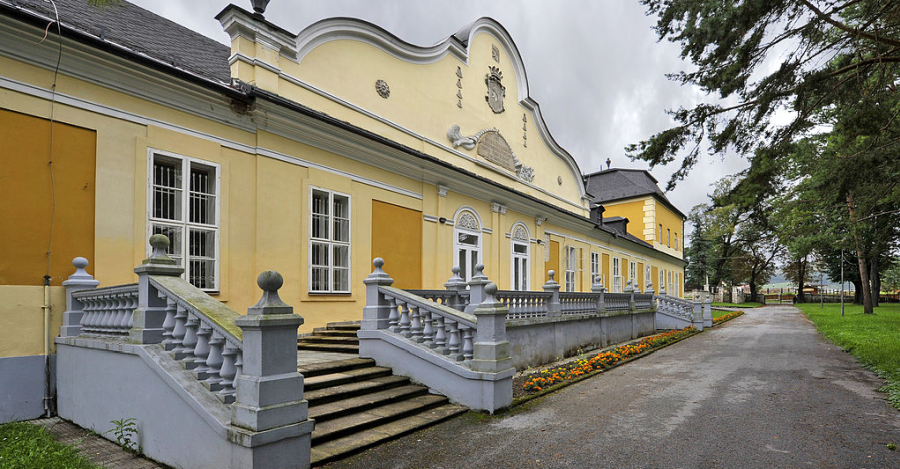
Count István Csáky (1741 – 1810) chose Iliašovce as his residence. From 1759 to 1761 he visited the Theresianum in Vienna where he learned excellent French language during his studies. Here he also met Mihály Sztáray (1749 – 1798), Lajoss Erdődy and Júlia Erdődy (1747 – 1809) whom he married in 1764 at the age of seventeen. In Iliašovce, they started building their seat in 1765 with a pompous original garden – an amusement park, which they called Sans Souci – a place with no worries.
Sans Souci inspired by the French enlightenment
The count and his wife Júlia Erdődy were both highly educated and shared common interests and an interest in French literature and art. Their rich book collection included editions of 18th century French books. From philosophical works to works of French literature that we could call spicy. One could imagine through this literature the overall spirit of the enlightenment and liberalism which formed the goal of both spouses through Sans Souci in Iliašovce: “to revive the idyllic golden age of poets and to create a shelter for philosophy, beautiful art, peace and freedom.”.
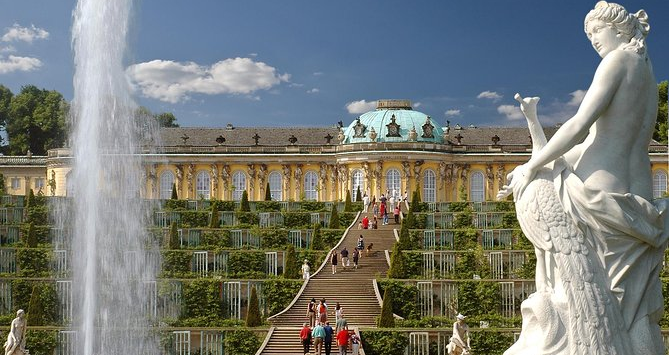
Admiring French culture, creating aristocratic residences, summerhouses and gardens in the style of French gardens were very fashionable at that time. And not only among the Hungarian nobility, which was inspired by foreign models. Another source of inspiration for István Csáky and his wife Júlia could also be the famous baroque garden of her father Ján Erdödy in Bratislava, which his contemporaries compared to the Sans Souci summerhouse in Potsdam. Like the gardens in Potsdam, it was situated on a slope and included a vineyard.
Learning about Sans Souci from the literature
We learn about what Iliašovce’s Sans Souci looked like at the time of its greatest glory mainly from literary sources. In honour of its building in 1776, count Mihály Sztáray wrote a short celebratory prose in French which, however, has not been preserved. He called it the New Sans Souci. It was translated into Hungarian by István Csáky and into Latin by Tamás Antal Szirmay. The poem also has its translations into German. Another source is the Latin work of Ján Demko and the 113-stanza verse of Lajos Erdődy Diószeghy in Hungarian. In 1790 he translated the German version of Imre Vitéz Ivánkay.
The individual descriptions of the garden are not the same, as if the authors and translators involved their own imagination and impressions in the descriptions. However, it is possible to create an overall picture of the garden from this mosaic. The garden was designed for entertainment, but also for relaxation. In the entertainment section it contained space for equestrian and ball games, the winding sidewalk led down the slope to the field with swings and carousel, shooting at the target and pigeons. In the centre of the playing area was a pyramidal elevated tribune, from which it was possible to watch games and competitions. The authors of the descriptions were most interested in the carousel. The women sat on the swans, the men on the horses, spinning on the carousel, trying to hit the heart hanging above them, hit the sticking head or use a saber to get the hoop. The bystanders rewarded the winners with an applause. Demko describes that these games were intended for guests and friends, but also for residents and peasants of the nearby area. A great hall was also built to entertain the peasants where they could eat, drink and dance.
As follows from the descriptions, István Csáky liked to spend time in a quiet part of the garden, in his favorite hermitage where he liked to read books and also did physical work in the garden. The hermitage and all its equipment were made of wood. As Demko describes, and humorously also Erdődy, even the spade was made entirely of wood. A guest book was also stored in the hermitage where each guest had to write something about solitude.
The appearance of the summerhouse is also described by a historical map
However, the locality of Sans Souci is approached not only from literary sources, but is also known from map materials. For example, it is captured on maps from the I. and the II. military mapping. The best idea of the spatial arrangement of the garden is provided by the map and the garden‘s floor plan from the Mátyás Pajdussák’s work. It shows the whole area with a description of individual attractions.
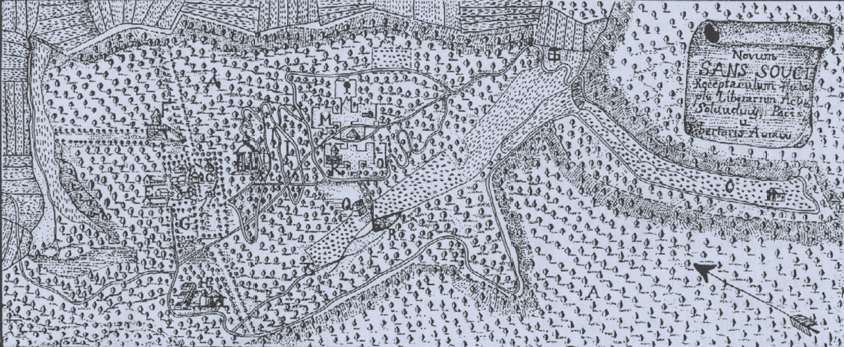
According to this drawing, the inner part of the area is lined with a pine forest through which straight alleys lead to the top of the hill and to the garden mansions, in the middle of a regular park with a flower parterre and shaped trees, which is lined with the tree lines. The buildings were used to accommodate the home estate, guests and servants. At the very top of the hill was built a so-called Dutch house which served as a vantage point for admiring the High Tatras panorama. In the park there were also other attractions typical of garden creation of this period. At the far top, which they called Parnassus, was the French classicizing Temple of Apollo with ten pillars, with a statue of Pegasus and statues of nine muses. There was a valley along the stream called the valley of Daphne where a statue of Daphne stood in the cool shade of trees leaning over the stream. Lajos Erdődy describes these inspirations with motifs from Greek mythology very colorfully using all his knowledge. Trout were swimming in the stream, a pond was created on it and a spa building was built here.
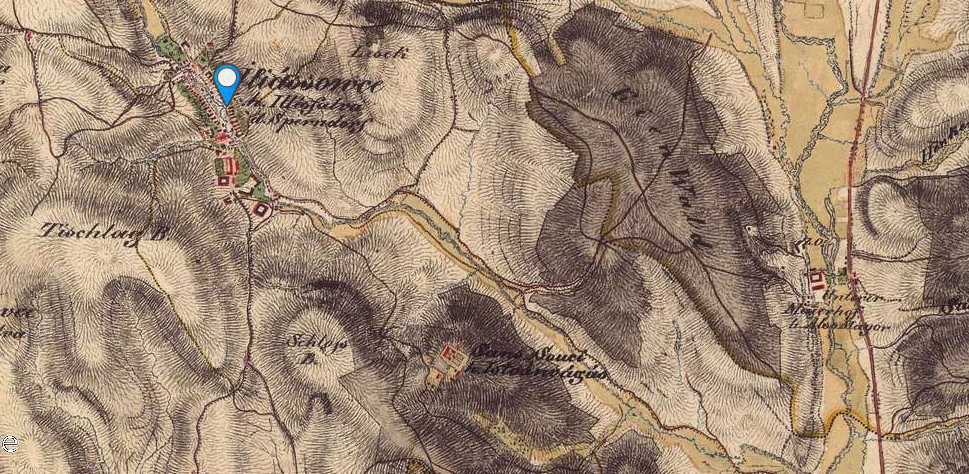
The Sans Souci composition also incorporates the surrounding natural environment, hills and valleys, innovatively combining elements characteristic of the French Baroque-Rococo gardens with elements typical of English natural landscape parks, which became characteristic of gardening in the Kingdom of Hungary in the 19th century.
The extinction of Sans Souci
The extinction of Sans Souci is surrounded by romantic legends about the end of life with no worries and about the end of love between spouses. The countess allegedly mastered the French free morality and her expensive, full of fun life led to financial decline which also caused marital disagreements. During one party, probably in 1803, count István Csáky allegedly had guests and sent for wine from the summerhouse to the countess. However, she refused to give him wine, so the enraged count issued an order to demolish and destroy all the buildings and structures of the summerhouse – this version is stated by Eckhardt. According to Pajdussák, too, the count gave the order to destroy the summerhouse in order to prevent his wife from staying in it.
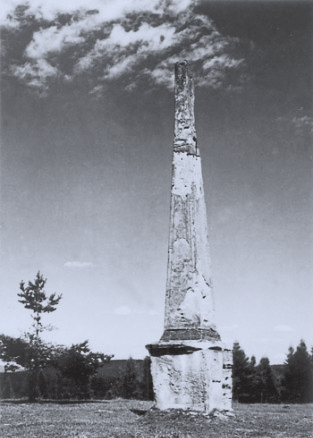
However, the fall of Sans Souci was probably a longer-term process. The marriage of István Csáky and Júlia Erdődy remained childless. Olga Granasztói states that the archival materials, as far as they are credible, speak of a daughter – a girl who on Parnas gave wreaths to the game winners and who died in 1777. Since then, the count has spent less time in Iliašovce and in 1785 he moved to a newly built moderate residence belonging to the Humenné estate. Sans Souci was used only by his wife during the summer months until 1803 when citing health reasons she definitively left Iliašovce and moved to her family in Bratislava. She died in 1809.
István Csáky’s death
Even the aging count probably suffered from diseases, as evidenced by his letters, since 1790 written with a shaken hand. Since 1800, others have been writing letters for him. Since 1800, he has been solving serious financial problems and living in modest circumstances. He has been negotiating with his wife about property division since 1800 and he finally broke up with her in 1803 when an inventory of their property was also made. The equipment from Sans Souci is sold at auction and they are also being moved out of the manor house in Humenné. He grants a life annuity to his wife. In the last years of his life he seeks solace in faith. He died in 1810 and is buried in a church in Iliašovovce.
On May 30, 1810, István Csáky withdrew from this mortal life to eternity. He rests in the sanctuary of the Iliašovce church. He left the monuments of his fatherly care everywhere, he was a man of strong spirit and a model of Christian virtue, he did not fall into the power of a weak-minded spirit not even under the emperor Joseph II.
Matúš Pajdušák
Pajdussák’s words also point out that the family’s difficult period and the poor financial situation were also caused by serious changes in social, political and economic life. The reign of Maria Theresa in Austria-Hungary, Frederick II. the Great of Prussia, Catherine the Great in Russia, Louis XVI. and Mary Antoinette in France has ended. The period of the French Revolution, the Josephine reforms and later the Napoleonic wars has come. A carefree life was replaced by worries.